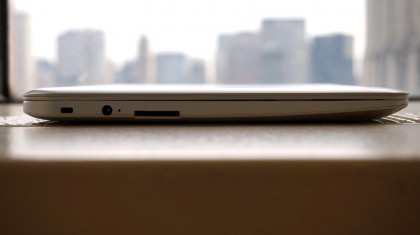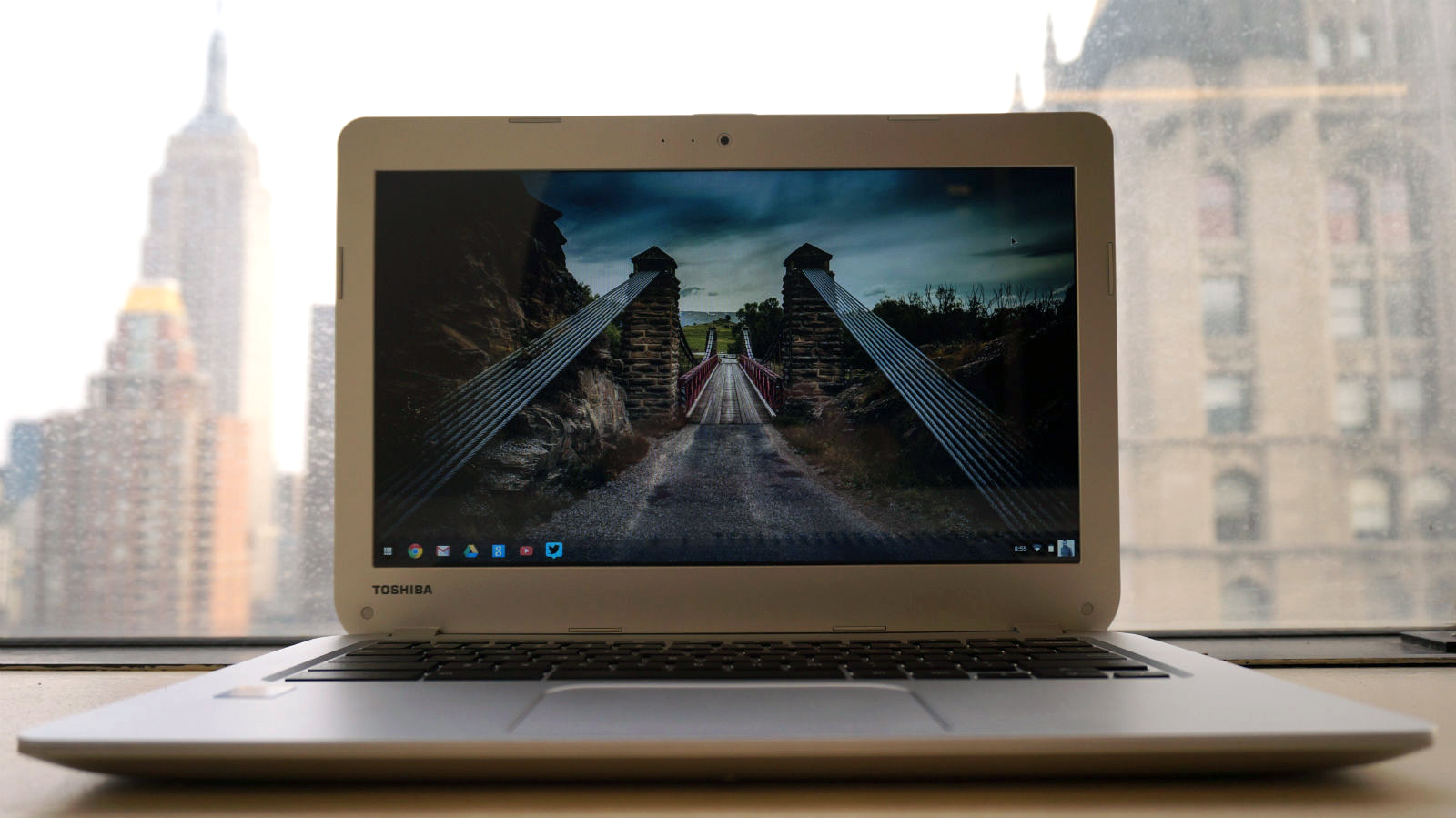Why you can trust TechRadar
On paper, the Toshiba Chromebook hews closely to the competition. 13.3-inch might be big for a Chromeback display, but the 1366 x 768 resolution of its LED backlit TFT panel is par for the course. It matches the Acer C720 Chromebook's 11.6-inch screen and the HP Pavilion 14 Chromebook's 14-inch display.
So the specs are similar but the dimensions vary and that's naturally what you'd first. At 12.9 x 8.9 x 0.8 inches (W x D x H) and 3.3 pounds, the Toshiba Chromebook isn't the lightest of the bunch. But again, this is the first Chromebook in this particular form factor.
Acer's 11.6-inch Chromebook comes in at 11.3 x 8 x 0.8 inches and 2.76 pounds, while HP's 14-incher measures 13.6 x 9.4 x 0.81 inches and weighs 4.07 pounds.

Basically, If you want something even lighter than the Toshiba Chromebook you'll have to drop to 12.5 or 11.6 inches. Again, this machine is otherwise largely identical to its competitors – the devil lies in the details.
Spec sheet
This is the Toshiba Chromebook configuration sent to TechRadar:
- CPU: 1.40 GHz Intel Celeron 2955U (dual-core, 2M Cache)
- Graphics: Intel HD Graphics
- RAM: 2GB DDR3L
- Screen: 13.3-inch, 1366 x 768, LED-backlit TrueBrite TFT screen
- Storage: 16GB SSD (100GB of Google Drive for two years)
- Ports: 2 USB 3.0, HDMI, SD card reader, headphone/mic jack, security lock slot
- Connectivity: 802.11a/b/g/n Wi-Fi, Bluetooth 4.0
- Camera: HD webcam with integrated microphone
- Weight: 3.3 pounds
- Size: : 12.9 x 8.9 x 0.8 inches (W x D x H)
All of these incredibly low-power (and arguably underwhelming in any other setting) pieces of hardware can be yours for the equally low-power price of $279 (about £167, AU$309). Given the Chromebook's inherent simplicity and heavy focus on affordability, there are no configuration options on offer here. What we got is what you can buy – which is not the case with Acer and HP's Chrome products.
If you're glancing across the aisle, both Acer and HP's competing Chromebooks offer the exact same processor, amount of RAM, starting solid-state drive capacity, wireless connectivity options (save for one) and a webcam/microphone pairing. Internally, the differences here are quite subtle.
Sign up to the TechRadar Pro newsletter to get all the top news, opinion, features and guidance your business needs to succeed!

The Acer C720 is more petite, but it matches the Toshiba Chromebook processing power and storage for $80 less at $199 (around £119, AU$220). And, if you're a stickler for on-board storage, you can double the SSD capacity to 32GB for $249 (about, £149, AU$276) – still cheaper, but still smaller.
On the other hand, the 14-inch HP Chromebook goes for $299 (around £179, AU$331), with a $349 model featuring 4G connectivity also available. (That's 200MB of free data every month, powered by T-Mobile and exclusive to the US.) This clamshell also comes in three glossy colors: white, teal and a coral-like red.
Keep in mind you'll get 100GB Google Drive storage for two years with any Chromebook you buy. Once that expires, you'll have to pay $4.99 a month for access to that space 24 months down the line. Otherwise, I wouldn't exactly count on that storage; it's a nice perk, but Google is counting on you chugging the Kool-Aid for years down the line.

At any rate, Toshiba's Chromebook offers twice as many USB 3.0 ports as its rivals, though it didn't take much; two is still double when the average is one. Save for size and speedy inputs – which should come in handy for those external hard drives – these Chrome machines are evenly matched as far as specs are concerned. Let's see where those internals get you during everyday use.
Joe Osborne is the Senior Technology Editor at Insider Inc. His role is to leads the technology coverage team for the Business Insider Shopping team, facilitating expert reviews, comprehensive buying guides, snap deals news and more. Previously, Joe was TechRadar's US computing editor, leading reviews of everything from gaming PCs to internal components and accessories. In his spare time, Joe is a renowned Dungeons and Dragons dungeon master – and arguably the nicest man in tech.

